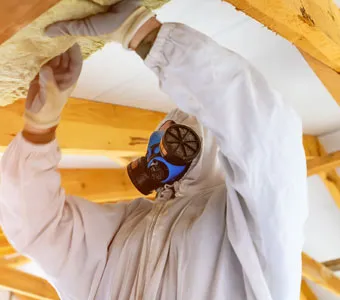Florida Silicosis Statute of Limitations [Updated]
If you or a loved one has been diagnosed with silicosis in Florida, understanding the Florida silicosis statute of limitations is crucial for pursuing legal action. In Florida, the statute of limitations dictates the time frame in which you can file a legal claim for silicosis-related injuries. This period typically begins from the date of diagnosis or when the condition becomes known.
Understanding the Florida Silicosis Statute of Limitations
In Florida, the statute of limitations for silicosis claims is a critical legal timeframe that dictates how long individuals have to file a claim after being diagnosed with the disease. Silicosis is a severe respiratory illness caused by inhaling respirable crystalline silica dust, which often affects workers in construction, stone cutting, and other industries with high exposure to silica.
Under Florida law, the statute of limitations for silicosis claims typically starts from the date of diagnosis or when an individual reasonably should have known that their condition was related to silica exposure. The general deadline for filing a personal injury claim is two years. This period is essential for workers and their families to understand, as missing the filing window could bar their right to compensation.
How the Discovery Rule Affects Silicosis Claims
The discovery rule is an essential part of the statute of limitations for silicosis claims in Florida. Unlike many other personal injury claims, the statute of limitations in silicosis cases doesn’t begin when the injury occurs but instead when the injured party is diagnosed or when they become aware of the connection between their condition and silica exposure.
This rule allows individuals to file claims even if the exposure occurred many years earlier, as silicosis often develops slowly over time. For example, a construction worker may not show symptoms of silicosis until years after initial exposure. Once diagnosed, they have a limited time to take legal action based on their discovery, making it important to act quickly to secure compensation for medical bills, lost wages, and other related expenses.
Why Timing Is Critical in Silicosis Legal Cases
Timing plays a crucial role in the success of silicosis claims. Florida’s statute of limitations for silicosis claims typically gives individuals a set number of years from the discovery of their diagnosis to file their claim.
If a person fails to file within this window, their claim may be dismissed, even if they have a valid case. For many workers, the delay between exposure to silica dust and the manifestation of silicosis symptoms means they might not immediately recognize the cause of their condition.
However, once diagnosed, the clock begins ticking, and it is essential for affected individuals to consult legal counsel promptly to ensure they meet all deadlines. Timely action is the only way to protect one’s right to compensation for the significant medical costs and lost wages caused by silicosis.
How the Statute of Limitations Relates to Occupational Exposure to Silica
Silicosis is primarily caused by long-term exposure to silica dust in occupational settings, such as construction sites, mines, and stone fabrication workshops. In Florida, workers who have been exposed to silica dust in these industries have a limited time to file a claim after being diagnosed.
The statute of limitations applies specifically to workers who have been diagnosed with silicosis due to their job-related exposure, making it essential for employers and workers alike to understand the risks involved in such environments.
Occupational health and safety regulations, along with proper personal protective equipment (PPE), are crucial in reducing exposure. However, despite preventive measures, many workers may still develop silicosis, and the statute of limitations governs their ability to seek compensation for their condition. For workers in Florida who have been exposed to silica, it is essential to understand these timelines to secure the financial relief they deserve.
FAQs
Q: How Much Is a Settlement for a Silicosis Legal Claim?
A: Settlement amounts for silicosis claims vary widely based on factors such as the severity of the condition, the length of exposure, and the liable parties. Settlements can range from a few hundred thousand to millions of dollars, particularly in cases where the plaintiff suffers from advanced silicosis or related conditions like lung cancer. Each case is evaluated individually.
Q: Can You Take Legal Action for Silicosis?
A: Yes, individuals diagnosed with silicosis due to workplace exposure can file a civil court claim. Claims are typically based on negligence, product liability, or worker safety violations. If an employer fails to provide adequate protection, such as PPE or proper ventilation, workers may be entitled to compensation for medical expenses, lost wages, pain, and suffering.
Q: What Percentage Does a Lawyer Get in a Settlement Case in Florida?
A: In Florida, lawyers handling silicosis cases typically work on a contingency fee basis, meaning they take a percentage of the settlement amount. The exact percentage depends on the complexity of the case and whether it goes to trial. The fee is agreed upon before the lawyer begins working on the case, and they only get paid if the case is successful.
Q: How Long Do You Have to Be Exposed to Silica to Get Silicosis?
A: Silicosis can develop after a prolonged period of exposure to respirable silica dust, often 10 to 30 years. However, accelerated silicosis can occur with shorter exposure to higher concentrations of silica dust. The amount of time needed to develop the disease depends on factors like the intensity of exposure, the use of protective equipment, and individual susceptibility.
Schedule Your Silicosis Consultation Today
If you or a loved one has been diagnosed with silicosis as a result of occupational exposure to silica dust, it is crucial to understand your legal rights and the importance of timely action. The statute of limitations determines the time you have to seek compensation for medical expenses, lost wages, and other related damages. These time limits can significantly impact your ability to secure justice.
Schedule your silicosis consultation today to discuss your case and learn how you can protect your rights. The experienced team at Wallace & Graham is here to provide the support you need as you navigate the legal steps to obtain compensation for the harm caused by silicosis. We’re committed to helping you pursue the financial relief you deserve.






